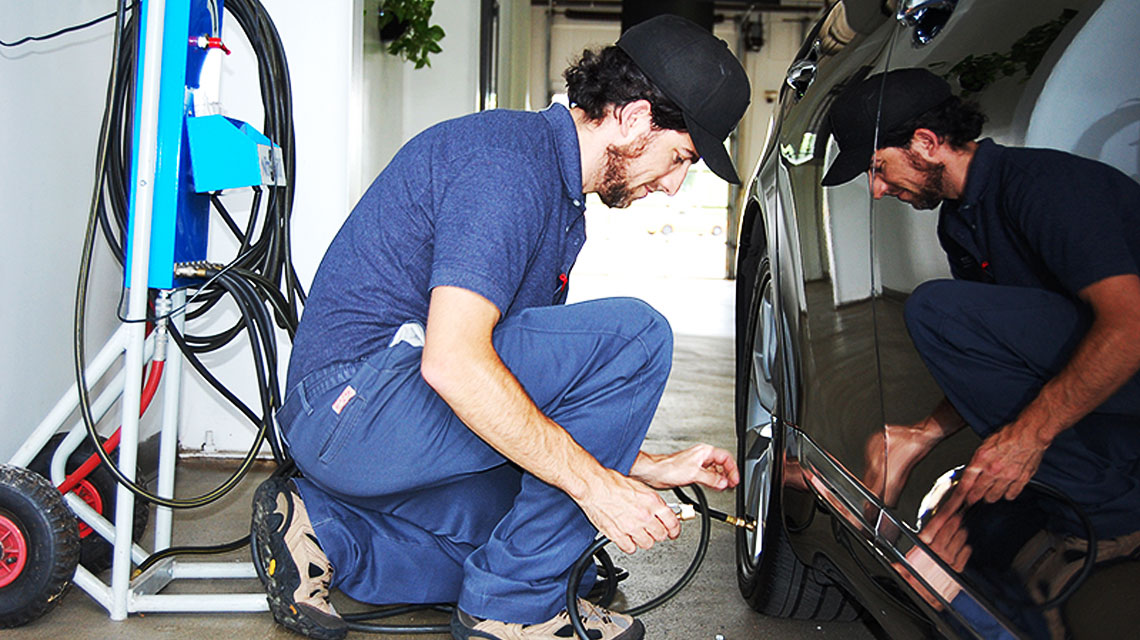DRIVER EDUCATION
STUDENT LEARNING PLAN #13
TIRE SELECTION AND CARE
Tires have as much to do with the safe performance of your car as the brakes, steering, and suspension system. If you give them proper care, they can increase your pleasure in driving and save you money. These lessons will help you provide the care necessary for safety, maximum tire life and performance. They can also help you select tires to match the car, the load, and your particular needs.
Illinois Office of Education
Demonstration Center Project
April, 1976
Car owners have the responsibility for proper tire care and selection.
SUPPORTING IDEAS
1. Tires should be selected to match the car and driver needs.
2. Proper care of tires improves performance and save money.
3. Regular inspection of tire wear and inflation is important to tire care.
UNIT 13 - - TIRE SELECTION AND CARE
LESSON IDEAS.
1. Tires should be selected to match the drivers needs.
2. Proper care of tires improves performance and saves money.
3. Regular inspection of tire wear and inflation is important to tire care.
LESSON OBJECTIVES
1. You can list the basic tire types and tell advantages and disadvantages of each.
2. You can list the types of fibers used in tires and identify the advantages and disadvantages of each.
3. Given a description of tire wear, you can identify the possible causes.
Given a description of tire wear, you can identify the possible causes.
4. You can list at least 4 preventative maintenance procedures for longer tire life.
5. You can describe the proper way to determine tire inflation.
6. You can identify various tire rotation patterns and identify the types of tires they are for and what purposes rotation serves.
LEARNING ACTIVITIES
1. Read Tire Selection. Write out the answers to the study questions.
2. Make a chart of tire types and their characteristics.
3. Tell what tire (type and fiber) you would buy. Explain why you think it is best for you.
4. Discuss with your parents the next set of tires they are going to buy. Find out their reasons for their choice.
Find out their reasons for their choice.
5. Explain what is meant by mixing tires. Why should it be avoided?
6. Read Tire Care. Write out the answers to study questions.
7. Find pictures in a book or magazine that show various tire wear to see if they are wearing properly and have enough tread.
8. Make a list of problems related to improper tire pressure.
9. Check tire pressure on drivers ed. Car and/or family car. Find out the recommended pressure and determine if tires are over, under or properly inflated for city driving and for expressway driving.
The tire diagrams above depict (top row) various erratic wear patterns and in each instance directly underneath, the cause of the problem as well as the corrective adjustment required.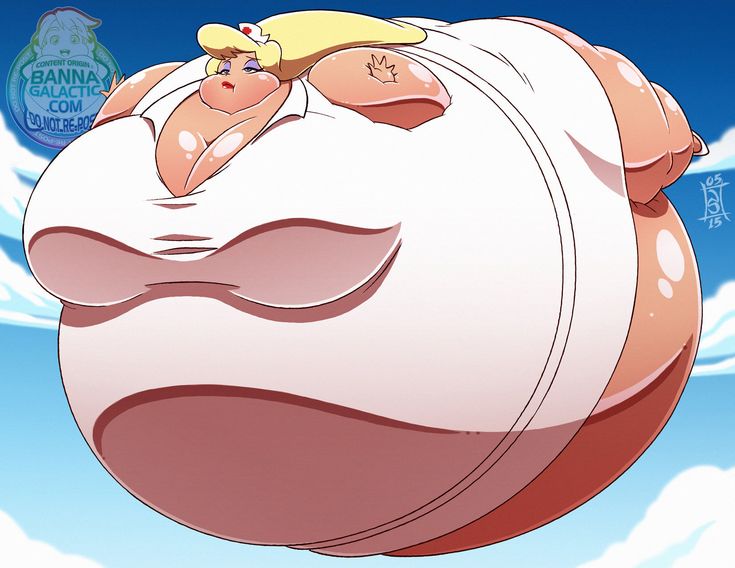 The tire flaw may be something as simple to fix as underinflation or overinflation of the tire, in which case the owner can attend to it. If the trouble is caused by improper balancing or on the front wheels, by misalignment, the car should he taken as soon as possible to a shop that specializes in doing this kind or work. A program of personal inspections and prompt correction of any flaws will ensure longer tire life.
The tire flaw may be something as simple to fix as underinflation or overinflation of the tire, in which case the owner can attend to it. If the trouble is caused by improper balancing or on the front wheels, by misalignment, the car should he taken as soon as possible to a shop that specializes in doing this kind or work. A program of personal inspections and prompt correction of any flaws will ensure longer tire life.
Tread wear indicators (above) are smooth horizontal bands about half an inch wide that become visible when only 1/16 of an inch remains of the original tread. When the bands appear two or more adjacent grooves, replace the tire.
TIRE SELECTION
Buying tires is often the hardest part of maintenance for owners. Not only are there three types of tires and many manufacturers, but each brand ahas several grades.
You should replace tires with tires of the same size or one that is like it.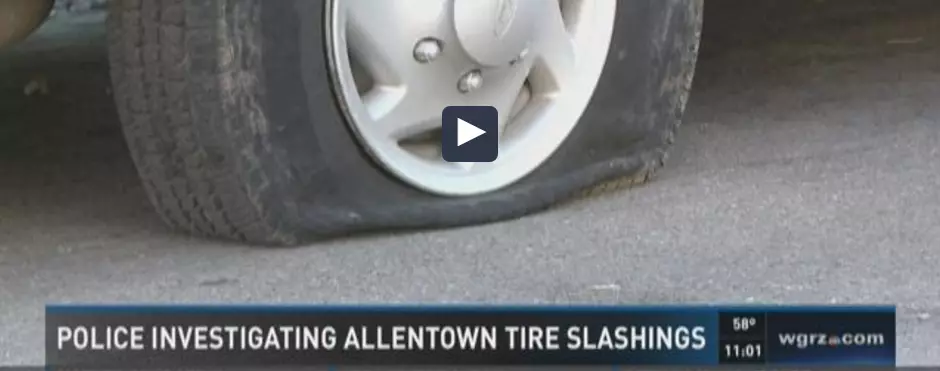 Putting a different size on your car may cause the speedometer to be wrong or cause poor performance.
Putting a different size on your car may cause the speedometer to be wrong or cause poor performance.
Plan what type of tire to buy, by thinking of the type of driving you do. Each of the three types of tires have good and bad points. Choose the tire that fits your driving needs.
Bias or bias ply tires are made with crisscrossed layers of cords. This makes for rigid sidewalls and treads. They are good for driving around town and can take curb bumping. There are few manufacturing problems. They give the softest ride of the three tire types. The problem with these tires is that they are poor for fast driving (highway) and gard turning.
Bias belted tires are made like bias tires but two or more layers of belts are added under the tread. Bias belted tires are good for cross country driving. They also give better stability, handle better, and are less likely to be bruised, punctured, or cut.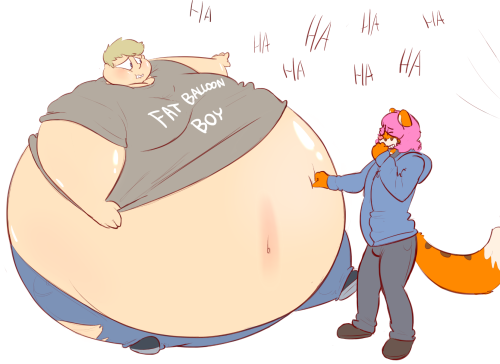 They should last 15 to 50 percent longer than bias tires. Another fringe benefit is 2 to 5 percent more gas mileage.
They should last 15 to 50 percent longer than bias tires. Another fringe benefit is 2 to 5 percent more gas mileage.
Radial tires are the newest tires on the market. The cords run from side to side on the tire. Belts are added running with the tread. The tread of these tires goes slightly to the side. The design makes a tire look underinflated even when properly inflated. They are best for all around driving and offer the best handling points as the tread is kept flatter on the road and in curves. They get less damage from bad roads that have ruts, rocks, and road debris. They increase gas mileage and some offer a guarantee of 40,000 miles.
Some of their bad points are they cost a lot, and give a harsh ride at low speeds. They are also easily bruised by hitting curbs. They should never be mixed with other tires.
Besides picking the tire type, you often have a choice of cord fabric. Radial tires often are steel belted. Other fabrics used are rayon, nylon, polyester, and fiberglass. Rayon gives the softest ride and is the cheapest but may be hurt by much exposure to water. Nylon is stronger than rayon but may give a rough ride and have temporary flat spots when the car sits. Polyester gives a good ride and good performance but is not as strong as nylon. Fiberglass may be added for more strength and better mileage. Steel gives maximum tread wear and good traction. It is the strongest cord used.
Other fabrics used are rayon, nylon, polyester, and fiberglass. Rayon gives the softest ride and is the cheapest but may be hurt by much exposure to water. Nylon is stronger than rayon but may give a rough ride and have temporary flat spots when the car sits. Polyester gives a good ride and good performance but is not as strong as nylon. Fiberglass may be added for more strength and better mileage. Steel gives maximum tread wear and good traction. It is the strongest cord used.
Some people, trying to save money, think about using retreads. These are worn tires with new treads added. Unless well done, they are difficult or impossible to balance. Also, they should not be used for high speed highway driving.
For winter driving, many people choose to buy special snow tires. These tires have special treads which grip the snow and are self-cleaning. Snow tires wear faster than normal tires on dry pavement and are not made for fast highway driving. Be sure to check the manufacturers recommendations before buying tires.:origin()/pre03/e8f2/th/pre/f/2015/085/6/3/taking_bets_by_notabot999-d8m02nq.png)
Studded tires have small metal cleats in the tread to dig into snow and ice for better traction. Many states including Illinois have outlawed them. While state officials know the benefits of studded tires they believe the damage done to the roads outweighs the good points. Stopping skill can be increased by up to 50 percent by using studded tires on all four wheels. When storing studded tires be sure to mark the position they were in and remount them the same way. Rotating the tire position will cause the studs to loosen and come out.
When buying replacement tires, it is best to buy a whole set (4 or 5 tires). It is best to have the same type of tire with the same handling characteristics which means better vehicle control. If you find you dont really need four tires, buy two tires of the same type already on your car and mount them on the rear axle. (The best tires would be in the rear to cut skid potential.) It is very dangerous to mix radial tires with other types.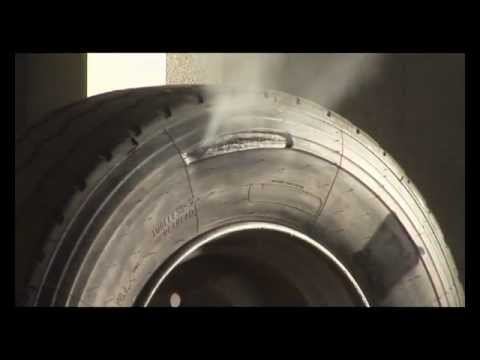 Safe driving requires that you can count on good performance under all conditions. When bias, bias belted, and radial tires are mixed some control is lost, especially in crnering. It is like wearing one rubber and one leather soled shoe. You probably wont notice the difference until its too late.
Safe driving requires that you can count on good performance under all conditions. When bias, bias belted, and radial tires are mixed some control is lost, especially in crnering. It is like wearing one rubber and one leather soled shoe. You probably wont notice the difference until its too late.
In order to pick the proper tire, you must ask yourself some questions.
1. What type of driving will I be doing?
2. Do I need winter tires for the driving I do?
3. How much can I afford to spend?
4. How many more miles do I plan on driving before selling the car?
5. What brand of tire is best?
6. Can I wait for sales?
7. Can I get the same tire cheaper somewhere else?
Remember, the smart shopper thinks of his/her needs, the price and the cost per mile.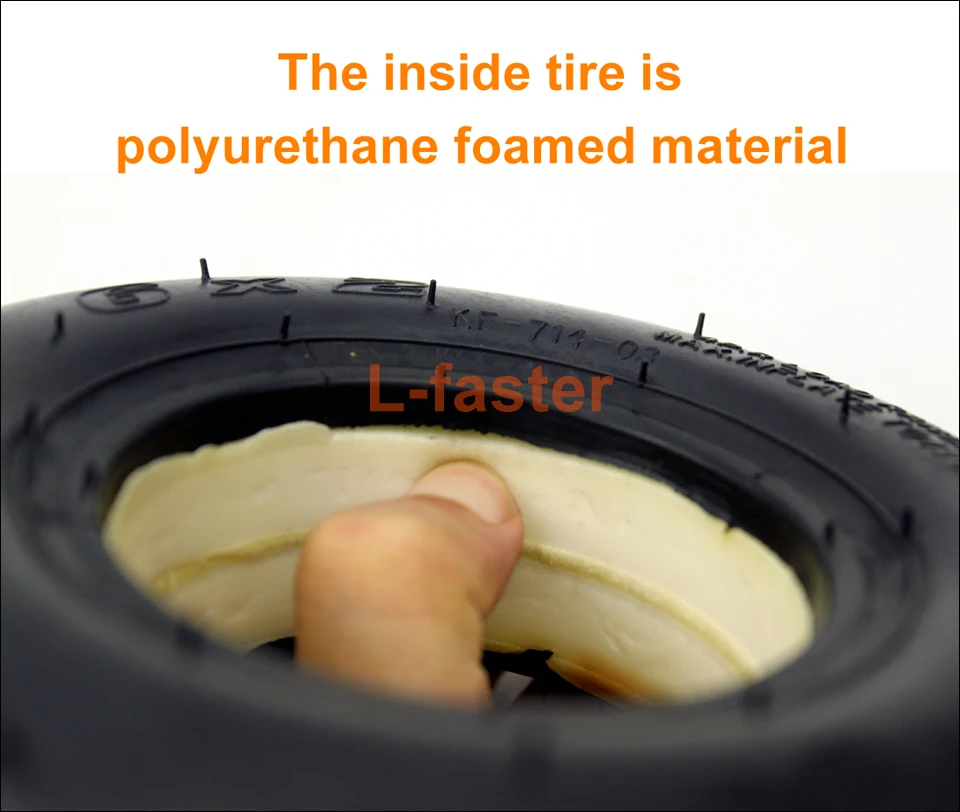 Be a comparison shopper.
Be a comparison shopper.
1. Should you mix tire types? Explain.
2. What are the good and bad points of bias tires? Bias belted? Radial?
TIRE CARE
The tires of your car are very important to your safety and have a direct effect on your budget. Well-cared-for tires will last longer and give better gas mileage. Your car will start, stop, and turn better.
Most tire care consists of simple things that anyone can do. You should be sure that all valves have caps and the stones, nails, and glass that become lodged in the treads of the tire are removed. Avoid hitting the tires in oil deposits. Remember that high speeds, fast starts, and pressure drops very low suspect a leak, bent rim, or cracked valve. Be sure to check the pressure of the tire again within a few hours to be sure the pressure is holding.
Tire pressure is often given in terms of KPA (kilopascal) or simply pounds.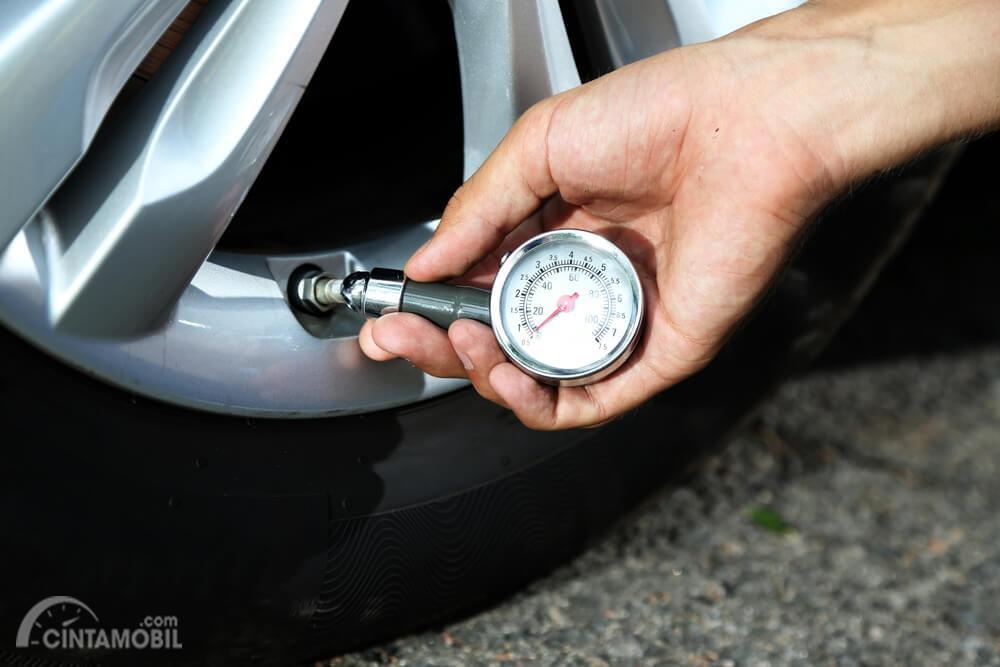 The correct pressure for your tires can be found in the owners manual or the glove compartment of your car. If you buy different replacement tires, be sure to find out from the dealer the proper pressure when you check your tires.
The correct pressure for your tires can be found in the owners manual or the glove compartment of your car. If you buy different replacement tires, be sure to find out from the dealer the proper pressure when you check your tires.
Most tire charts in cars and owners manuals will tell two different pressures. One is for a light load (one to five passengers and total weight not more than 240 kg and the other for full load (up to 500 kg). If you plan larger loads than those given on the chart you should think of buying different tires and maybe buying helper springs or heavy duty shock absorbers. Check charts for the maximum weight per tire for the inflation you will be using. The total weight should not be more than the weight of the car and its load together.
Tire pressure should be checked about once a month. This may vary from two to six weeds. Also, tire pressure should be checked before long trips and after extreme temperature changes. It is thought that your tire pressure will change one pound for each ten degree change in temperature. (If it is 32 degrees celsius one day and 13kp the next, your tire pressure will go down about five pounds.) Tire pressure is always given as a cold tire pressure. All tires will increase pressure while driving so it is important to check the pressure before driving. Of you must drive to a gas station, go right there. After driving, wait as least three hours before checking tire pressure. Do not mix up the recommended pressure for the maximum pressure stated on the tire. The pressure should never go above the amount stamped on the tire and in most cases will be below it.
(If it is 32 degrees celsius one day and 13kp the next, your tire pressure will go down about five pounds.) Tire pressure is always given as a cold tire pressure. All tires will increase pressure while driving so it is important to check the pressure before driving. Of you must drive to a gas station, go right there. After driving, wait as least three hours before checking tire pressure. Do not mix up the recommended pressure for the maximum pressure stated on the tire. The pressure should never go above the amount stamped on the tire and in most cases will be below it.
Although an important part of care and safety, tire pressure is often forgotten or left in the hands of gas station attendants. Cars can have a two to ten pound difference between the front and rear tires to give the car more stability. Attendants often put the same pressure in all tires. Many stations use air gauges mounted on the air hose. These air gauges are often not right. Be sure the station attendant uses a hand pressure gauge and knows the correct pressure for your tires. This is really such an easy part of maintenance that each person do it and not take chances on faulty equipment or poorly informed service attendants. Also, attendants forget to check the spare tire pressure. It should be checked at the same time.
This is really such an easy part of maintenance that each person do it and not take chances on faulty equipment or poorly informed service attendants. Also, attendants forget to check the spare tire pressure. It should be checked at the same time.
A mistake people often make is to check tire pressure after driving. It is impossible to figure how much pressure will be increased while driving. Letting air out of a hot tire may cause underinflation.
Another mistake is the visual check. Visual checks should be used to find a flat tire, check for stones or cuts; but cannot be used to get correct pressure.
Bias and bias belted tires may be ten pounds below pressure before they look low. On the other hand, radial tires, when properly inflated, look low. The only way to get the right idea of the tire pressure is with a pressure gauge.
Improper inflation makes problems in vehicle control. One low tire may cause a pull on the steering wheel or affect the cornering ability of the car.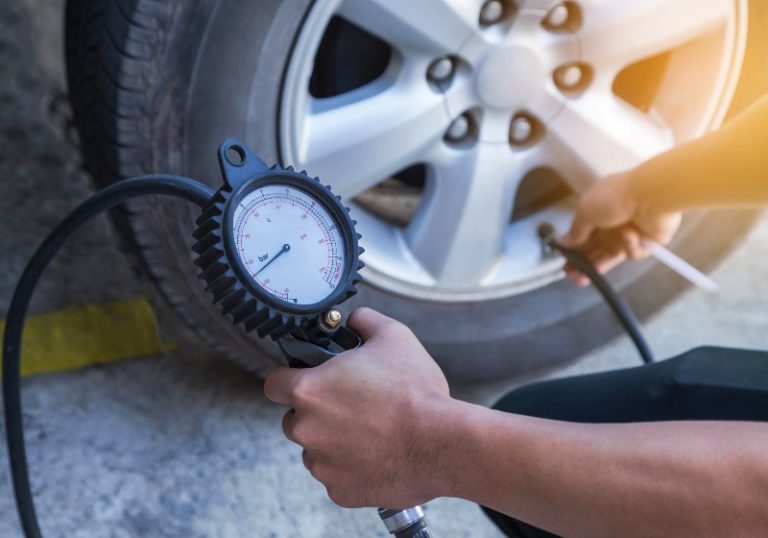 Both overinflated and underinflated tires are more likely to suffer a blowout. Traction is cut which lengthens stopping distance and cuts cornering skill. Also, tires will wear improperly. Overinflated tires get rounder and wear in the center. Underinflated tires bulge and wear on the edges. Other things that will cause your tires to wear improperly and quickly include improper wheel balance and alignment.
Both overinflated and underinflated tires are more likely to suffer a blowout. Traction is cut which lengthens stopping distance and cuts cornering skill. Also, tires will wear improperly. Overinflated tires get rounder and wear in the center. Underinflated tires bulge and wear on the edges. Other things that will cause your tires to wear improperly and quickly include improper wheel balance and alignment.
Although you are warned not to change tire pressure when driving in snow it is important to fix it for long distance highway driving. Depending on the load and type of pressure marked on the side of your tires.
Tread depths tell how well your car will handle, so you should check tread life and replace them when they are bad. Experts say that treads must be at least 1.65 mm. Cheap gauges can be used to measure tread depth and the evenness of wear in tires. A simple test anyone can use is the penny test. Insert a penny head first into the tread.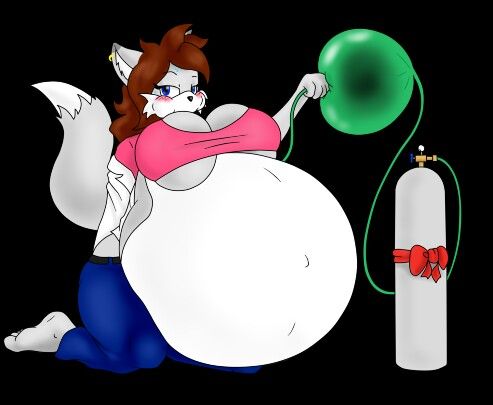 If the head is totally visible, it is time to replace the tires. Remember, bald and nearly bald tires are more likely to be punctured, more likely to blowout, and more likely to hydroplane in wet weather.
If the head is totally visible, it is time to replace the tires. Remember, bald and nearly bald tires are more likely to be punctured, more likely to blowout, and more likely to hydroplane in wet weather.
Tires on a car do not wear evenly. Back tires get more wear than the front. In order to balance wear and make handling better, tires should be rotated every 9600 km 12,800 km. The best tire rotation is shown on the following page. Please see the radial tires have a different rotation than all other tires.
Five tire rotation is often used with a new car. Often, when people buy the second set of tires they keep the best for a spare and only the four new tires are rotated. If you buy special winter tires while changing back to your regular tires.
Snow tires may be bought for the back of the car only or for all four wheels. This means that you will also have to store the extra tires. Tires should be stored in a cool dry place away from furnaces r batteries which may produce ozone. Store whitewalls facing each other. Identify which wheel position they were taken off of so they can be returned to the proper position. Like most new things, tires need a break-in period. Tires should be driven below 90km/h for the first 80 km.
Study Questions
1. List five general maintenance tips for tires.
2. How often should tire pressures be checked? Spare tire?
3. Explain cold tire pressure.
4. What can tire wear patterns tell you?
5. What is the minimum safe tire tread depth?
6. How often should tires be rotated and why?
7. Where is the correct air pressure generally found?
8. What is the purpose if visual tire checks?
9.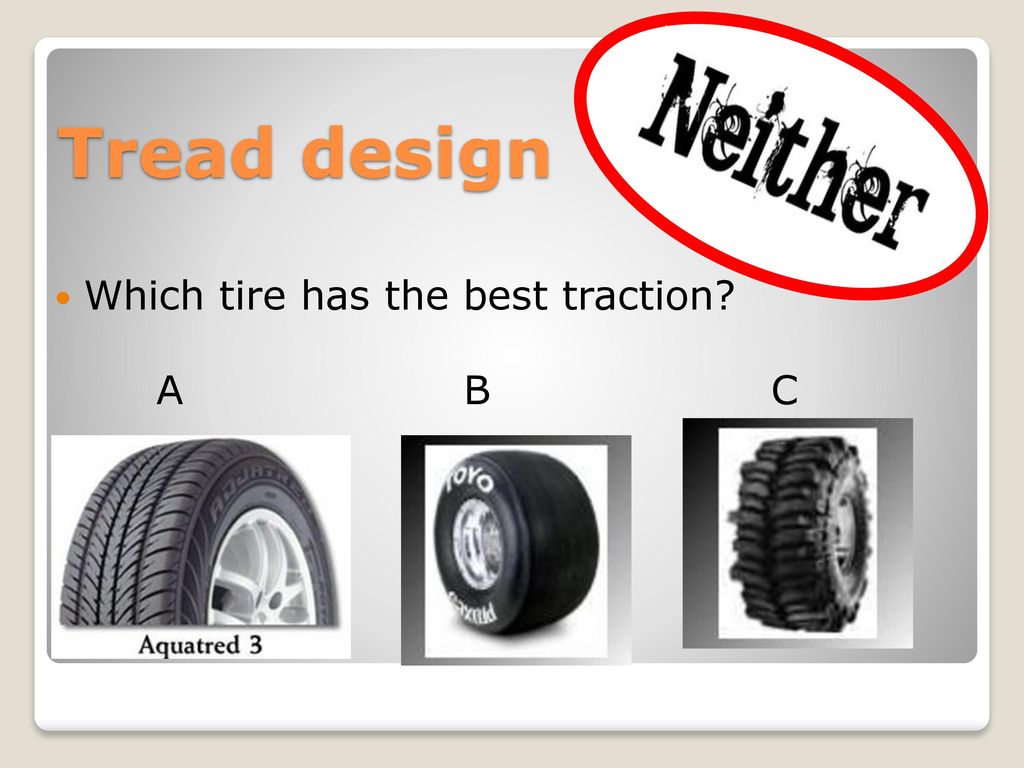 What adjustments should be made in tire pressure for high speed driving?
What adjustments should be made in tire pressure for high speed driving?
TWO PLY TIRE CONTRUCTION
TIRE CAR AND SELECTION TEST
Multiple Choice Questions - - Select the ONE best answer.
1. A tire that is driven without enough air (underinflated) will wear
A. on the inside edge.
B. on the outside edge.
C. on both edges.
D. in the center.
2. Tires will wear out faster if your driving usually includes
A. gradual stops.
B. quick stops.
C. low speeds
3. Your tires may be damaged by
A.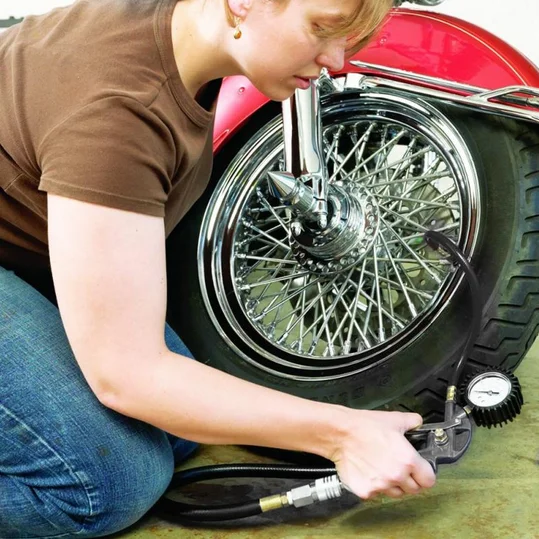 hitting curbs when parking.
hitting curbs when parking.
B. parking in oil deposits.
C. both of these.
4. The correct tire pressure for your tires is usually
A. found in the glove department.
B. known by a gas station attendant.
C. on the tire sidewall.
5. Tire pressure should be checked
A. only when tires look low.
B. every week.
C. once a month.
D. twice a year.
6. The spare tire pressure should be checked
A. every week.
B. once a month.
C.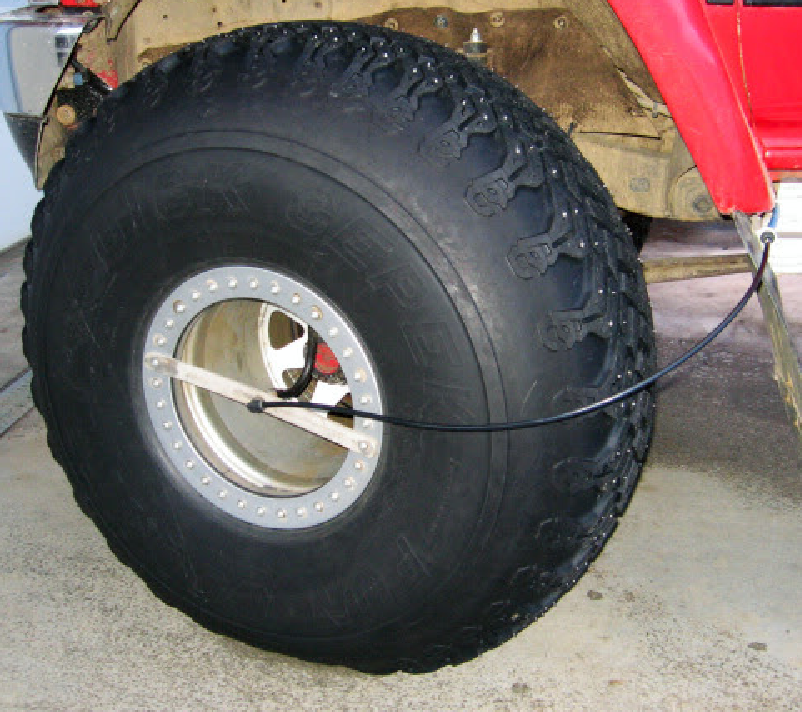 twice a year.
twice a year.
D. once a year.
7. Identify the false statement about tire pressure
A. Tire pressure should be checked before driving.
B. Tire pressure should be lowered in the winter.
C. Tire pressure should be raised for heavy loads
D. Hand gauges are usually the most accurate.
8. Underinflated tires
A. shorten stopping distance.
B. increase turning ability.
C. increase chances of a blowout.
D. none of these.
9. Overinflated tires
A. wear out in the center.
B.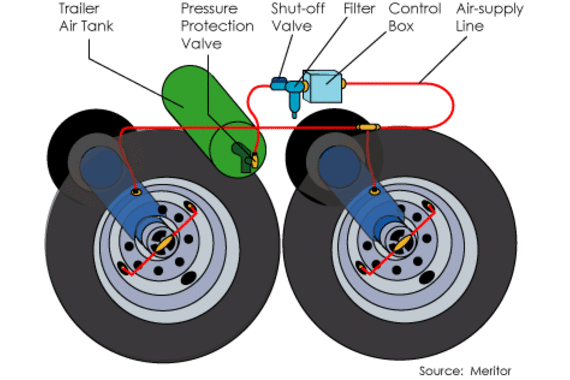 are better for highway driving.
are better for highway driving.
C. make better stops.
D. all of these.
10. Tires with poor treads
A. are more likely to hydroplane.
B. are more likely to be punctured.
C. take longer to stop.
D. all of these.
11. Tires are no longer considered safe when the tread is
A. 0.8 mm
B. 1.6 mm
C. 3.2 mm
D. 6.4 mm
12. Tires should be rotated every
A. 3,200 km
B. 6,400 8, 000 km
C. 9,600 12, 900 km
D. 16,000 km
16,000 km
13. Tire rotation is done to
A. equalize the wear on all tires.
B. improve the handling of the car.
C. keep the best tires on the back.
D. all of these.
14. In the tire size B70- 13, the number 13 stands for the
A. diameter of the rim.
B. width of the tire.
C. height-to width ratio.
15. Bias tires are good for
A. driving around town.
B. cross country driving.
C. decrease gas consumption.
D. all of these.
16. Bias belted tires are
A. stronger than radial tires.
stronger than radial tires.
B. stronger than bias tires.
C. Usually guaranteed for 64,000 km
17. Radial tires
A. are the cheapest types of tires to buy.
B. Give the softest ride.
C. Offer the best handling charecteristics.
18. A disadvantage of many snow tires is that they
A. should not be used for highway driving.
B. Make stopping distance longer.
C. Are legal in some states.
D. All of these
19. Studded tires
A. should not be rotated.
B. Are designed for highway driving.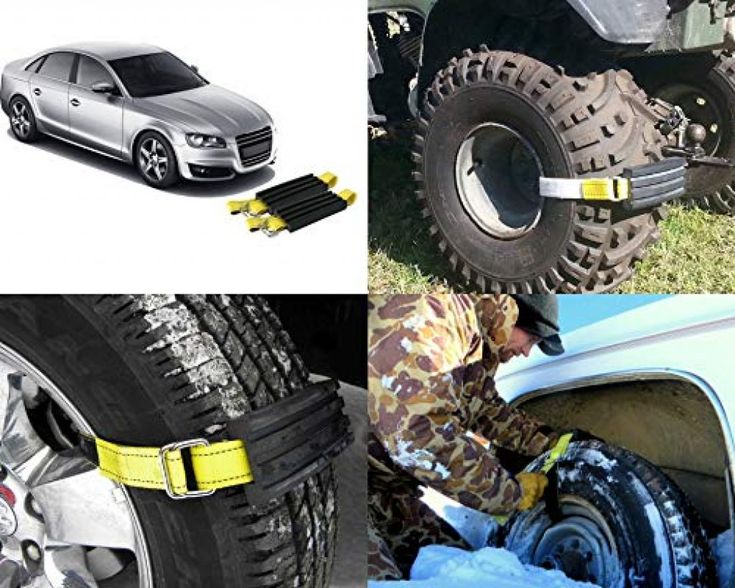
C. Are illegal in Illinois.
20. When buying new tires, it is best to buy
A. one tire at a time (as they are needed).
B. Two at a tome (placed on the rear axle).
C. A full set (four or five tires).
21. When buying winter tires for the back axle only, they
A. should be the same type of tires as the front tires.
B. Should be better type of tire than the front.
C. May be any type pf tires.
22. When buying new tires, you should consider
A. the number of kilometers you plan to drive the car.
B. the type of driving you do.
C. If one brand is better than the other.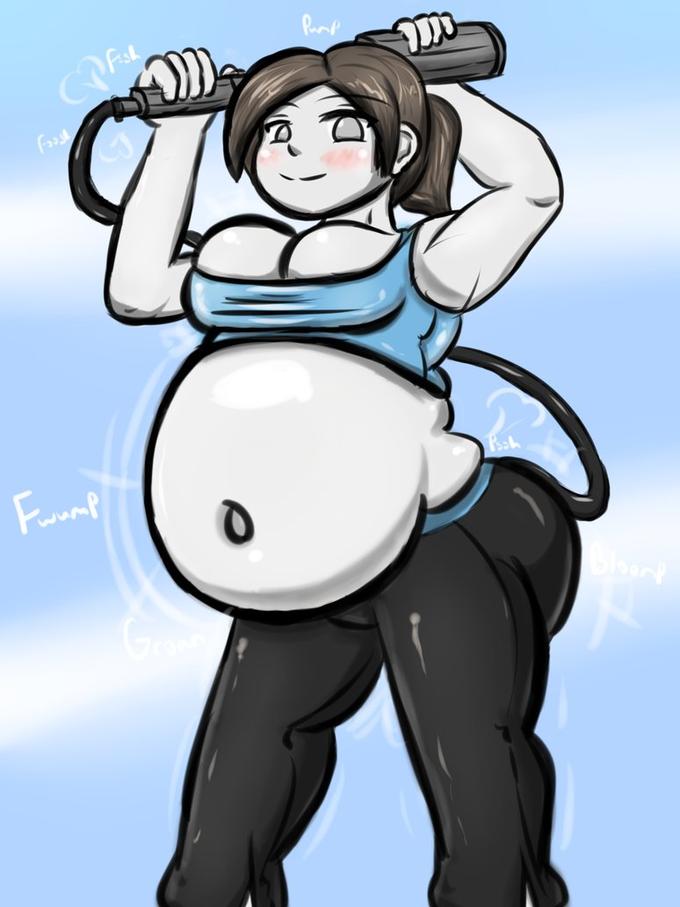
23. When changing a flat tire, the car should
A. be in park.
B. Have four-way flashers on (hazard lights).
C. Be well off the road.
D. All of these.
24. When changing a tire, it is wise to
A. tighten the lug nuts completely before lowering the car
B. use a star pattern when tightening the lug nuts.
C. Loosen all lug nuts completely before raising the car.
D. All of these.
TEACHERS GUIDE FOR TIRES UNIT
This unit is designed to assist students in the development of stored information for proper tire care and selection. The purpose is to show students how to make their safer at the lowest cost to them.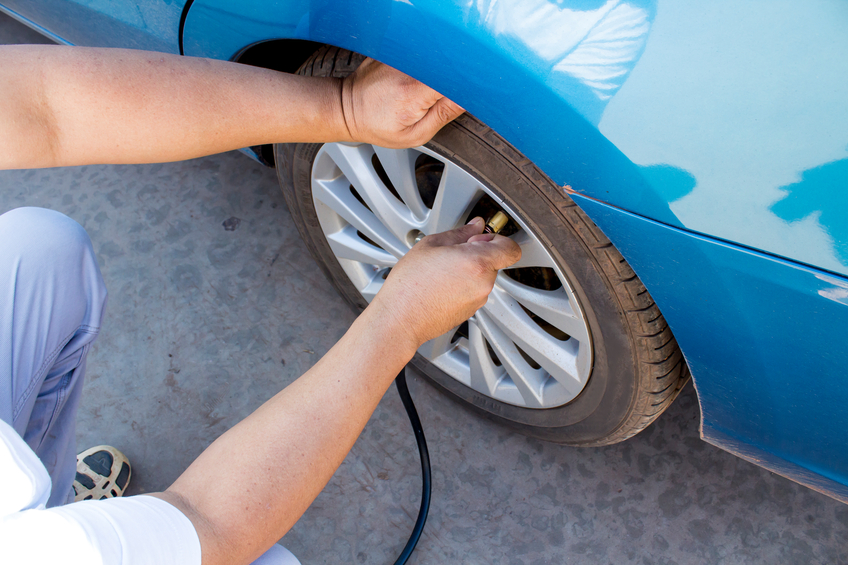 As in maintenance of any part of the car, lack of knowledge or simple failure to exercise ones knowledge may lead to personal inconvenience, higher operating costs, accidents, or even personal injury. Todays tires are much safer than yesterdays, but proper maintenance and selection is still necessary.
As in maintenance of any part of the car, lack of knowledge or simple failure to exercise ones knowledge may lead to personal inconvenience, higher operating costs, accidents, or even personal injury. Todays tires are much safer than yesterdays, but proper maintenance and selection is still necessary.
Much of the material presented in this unit cannot really be tested except in an objective manner in the classroom. It is hoped, however, that whenever time and facilities permit that students will be given the opportunity in classroom, range, or even possibly stimulation, to participate in check tread depth, tread wear patterns, and tire pressure as well as learn how to change a flat. This laboratory experience may be completed with other units including such items as battery and oil checks. Although tread wear patterns are discussed in this unit only in relation to proper inflation, it is assumed that it would be covered in other units under system malfunctions.
Since tires change rapidly, no effort was made to evaluate brands of tires.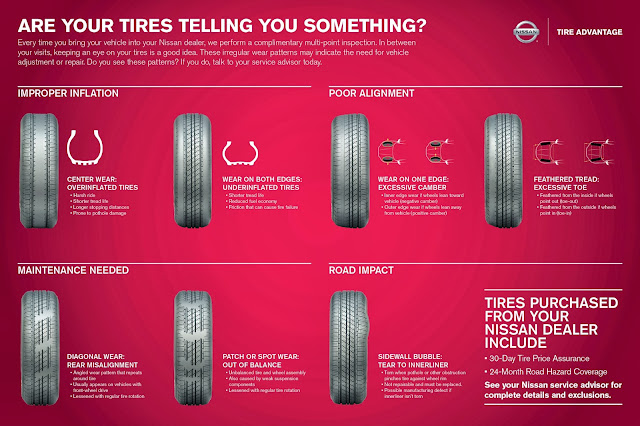 It hoped that you and your students will have available the most current library materials on tire selection and care. Those references should be used and recommended to students for their future use. The material presented here is based on the general claims of the tire industry. Encourage students to look for the exceptions.
It hoped that you and your students will have available the most current library materials on tire selection and care. Those references should be used and recommended to students for their future use. The material presented here is based on the general claims of the tire industry. Encourage students to look for the exceptions.
Every attempt has been made to test each objective outlined in the student learning plan. Each answer can be found in one of the two student resource papers included.
1. C 6. B 11. B 16. B 21. A
2. B 7. B 12. C 17. C 22. D
3. C 8. C 13. D 18. A 23. D
4. A 9. A 14. A 19. A 24. B
5. C 10. D 15. A 20. C
1. Student Learning Plan.
2. Tire Care.
3. Tire Selection.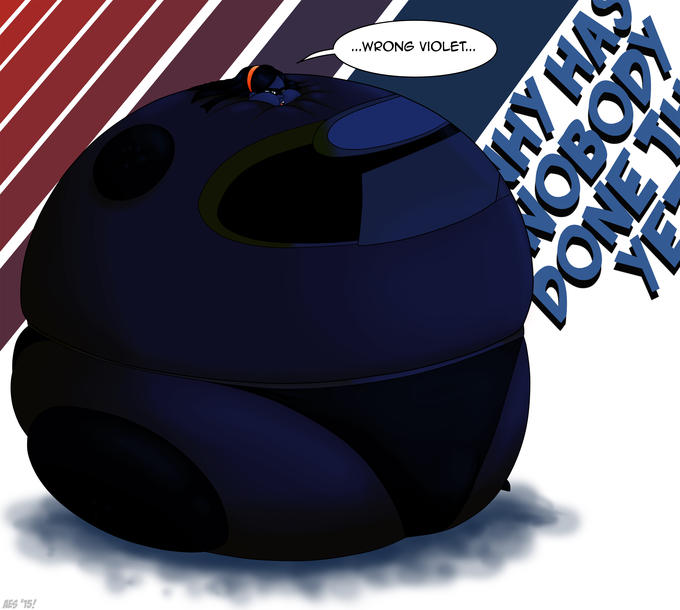
4. New Car Owners Manual
5. Consumer Tire Guide, (available free from: Tire Industry Safety Council, Box 726, New York10010).
1. Brochures from local dealers.
2. Consumer Reports Consumers Research Yearbooks, and current monthly issues.
The tires on your car are arguably the most important component, as without them you can’t get anywhere no matter how big your engine is. Taking care of your tires is essential, and it is important to know what the effects are of underinflating or overinflating your tires.
The 4 symptoms of over-inflated tires are:
Below, we will look at why your tires might be over-inflated, and some good practices to ensure you always have the right amount of pressure in yours.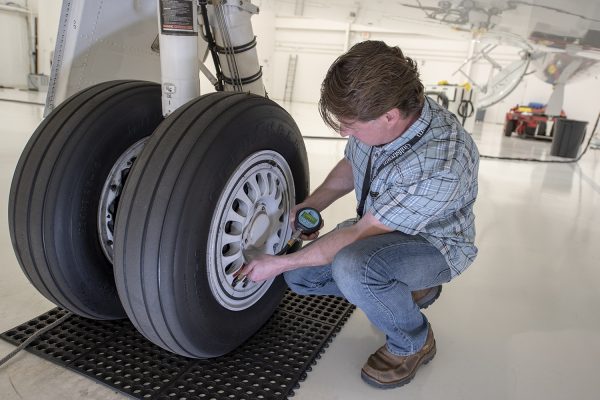 We will then discuss the effect of having too much air in your tires, as well as too little.
We will then discuss the effect of having too much air in your tires, as well as too little.
Table of Contents
What Is Tire Pressure?Many people drive their car every single day and have no idea what pressure their tires are at, or why it is important. The air in your tires is what allows you to drive at speeds of more than a few miles per hour, as deflated tires provide not just an unstable and dangerous ride, but also a slow one, as they offer too much resistance against the road surface.
But it is not just speed you should be thinking about when considering how much air is in your tires, as it is just plain dangerous to be driving around with the incorrect tire pressure. Tire pressure is measured in pounds per square inch (PSI) or bar. Your car will have its own specified pressure to which you should inflate your tires, with the fronts usually requiring more pressure than the rears.![]()
This is because the engine is usually in the front, and thus more of the car’s weight is over the front tires. The tires’ ability to carry the weight of the car is proportional to the pressure inside of it, so for more weight the tires need to be of a higher pressure. In cars with most of the weight in the rear, the rear tires will need to be at a higher pressure than the front tires.
The reason for this is all about the contact patch that the tire has with the road. The contact patch is the section of the tire that is touching the road at any one time. It is the only point of contact (well, one of four, with one on each tire) that your car has with the road. Thus, maintaining the correct tire pressure will ensure you have the optimum amount of grip.
However, tire pressure doesn’t just correspond to grip levels, as there are other safety implications of incorrect pressure. Let’s take a look at each case in more detail.
Let’s take a look at each case in more detail.
RELATED ARTICLE How To Get Into F1: The Ultimate Guide
Over-Inflated TiresOver-inflated tires can have a massive impact on your ability to control the car, and thus your safety as well. Not only will your car drive differently, but you will also be putting yourself at higher risk of having a tire blow out. Think of it like blowing up a balloon: as you put more air into it the balloon, will become much easier to pop.
A tire blowout could prove fatal if you are driving at high speed, but there are other symptoms of over-inflated tires that can also pose real risks. Let’s take a look at them in more detail below.
RELATED ARTICLE What Is An F1 Super Licence? (And The Path To Getting One)
4 Symptoms Of Over-Inflated Tires1. Lack Of TractionThe first sign that your tires are over-inflated is a loss of traction. As we stated in the previous section, the contact patch of your tires is what gives your car the grip. When your tires are over-inflated, this contact patch becomes smaller as the center of the tire begins to bulge. This means it is only the center couple of inches that will be in contact with the road.
As we stated in the previous section, the contact patch of your tires is what gives your car the grip. When your tires are over-inflated, this contact patch becomes smaller as the center of the tire begins to bulge. This means it is only the center couple of inches that will be in contact with the road.
This will cause you to lose grip, as the smaller the contact patch, the less grip that is offered. As you go around corners you may begin to feel the car want to slide slightly, or you may find that your braking distances increase. But you shouldn’t wait to see what the handling is like while driving. Instead, you should regularly check out your tire treads.
2. Excessive Wear On Center TreadsBy checking your tire treads regularly, you will begin to notice if the center treads are worn out significantly more than those on the outside and inside of the tire. If you have been driving with over-inflated tires for a while, the center treads will have been doing most of the work in terms of the contact patch, and so will most likely be far more worn than the surrounding treads.
There are legal limits as to how much tread you must have on your tires, and this is measured by depth, across the full tire. So, even if you have more than enough tread on the outside and inside of the tire, if your center treads are worn down beyond the limit you could be breaking the law. Not only are your treads important for grip, and thus safety, you also don’t want to be driving illegally.
3. An Uncomfortable RideAlong with a potential decrease in grip, you will also probably notice a more uncomfortable ride with over-inflated tires. This is because over-inflated tires are stiffer and less flexible than those filled to the correct levels. Stiffer tires will transfer more of the bumps from the road to you and your passengers, while a properly inflated tire will absorb more of the shock.
It won’t be quite as noticeable as if you were to be driving with a broken suspension system for example, but if you spend a lot of time driving on uneven surfaces you will definitely feel it more.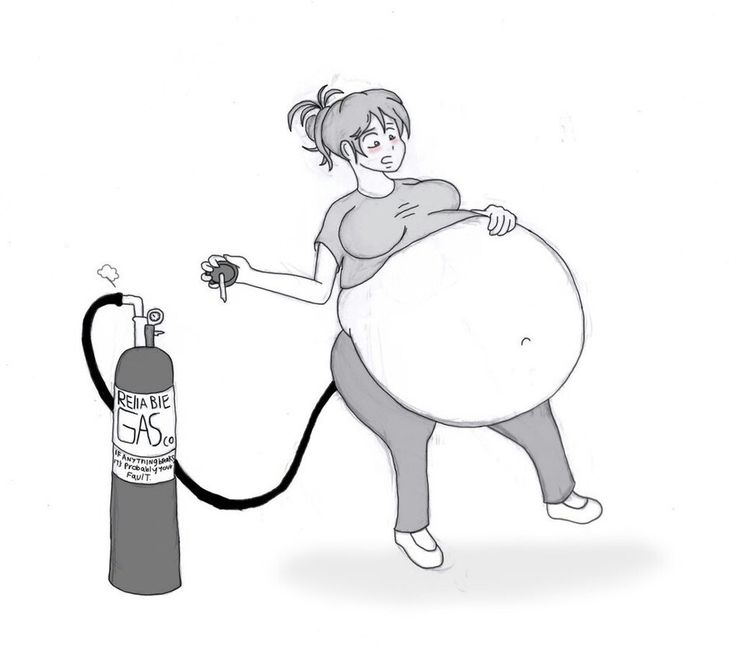 If you are racing, the high speeds will ensure you feel even the smallest of bumps in the road, and so it won’t just be dangerous, it will also be very uncomfortable.
If you are racing, the high speeds will ensure you feel even the smallest of bumps in the road, and so it won’t just be dangerous, it will also be very uncomfortable.
Finally, aside from a loss of traction and the car feeling very uncomfortable to drive, you may also find that it behaves a bit differently to what you are used to. This is because systems like the ABS and traction control are tuned to work with tires that are filled with the correct amount of air.
If you overfill your tires, your electronic stability control systems may begin to act in strange ways, as they may pick up incorrect signals from the wheels, and thus try to control the car in seemingly weird ways. This could prove to be very dangerous, and it is yet another reason you should ensure you always fill your tires with the right amount of air.
RELATED ARTICLE How Does Weight Distribution Affect Race Car Performance?
Under-Inflated TiresUnder-inflated tires can prove to be just as dangerous as over-inflated tires for similar reasons.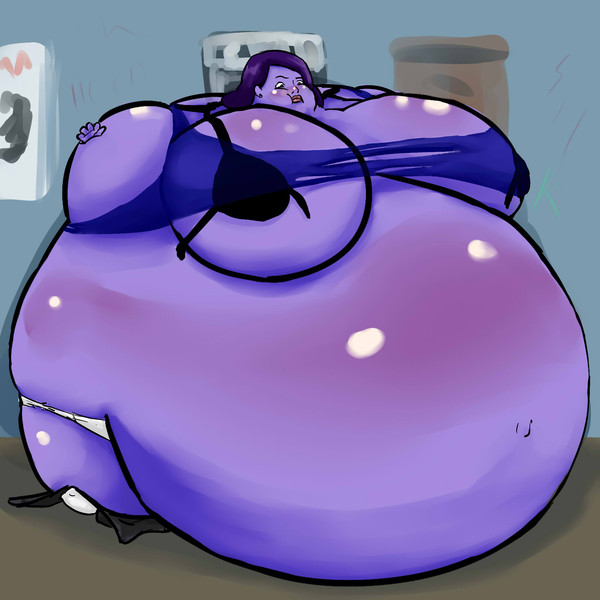 For instance, a heavily under-inflated tire can also have a smaller contact patch, as the tire can deform more under the weight of the car and thus the full width of the tire might not be in contact with the road. This will also cause the tire tread to wear out in an uneven fashion.
For instance, a heavily under-inflated tire can also have a smaller contact patch, as the tire can deform more under the weight of the car and thus the full width of the tire might not be in contact with the road. This will also cause the tire tread to wear out in an uneven fashion.
This can cause a lack of grip, and it can also make your car far less fuel efficient. Under-inflated tires can offer more resistance to the road, and thus make it harder for your car to push itself forwards. This results in higher fuel consumption, but it can also make your car’s handling unpredictable, with braking distances affected and an inhibited ability to turn the car.
RELATED ARTICLE Why Do F1 Tires Wear So Fast? (Full Explanation)
Always Inflate Your Tires ProperlyIt is clear that both over-inflating and under-inflating your cars’ tires is a bad idea. Only in extreme cases will you be able to tell if a tire is under or over-inflated just by looking at it, as anything less than 10 PSI either way is pretty much undetectable to the eye.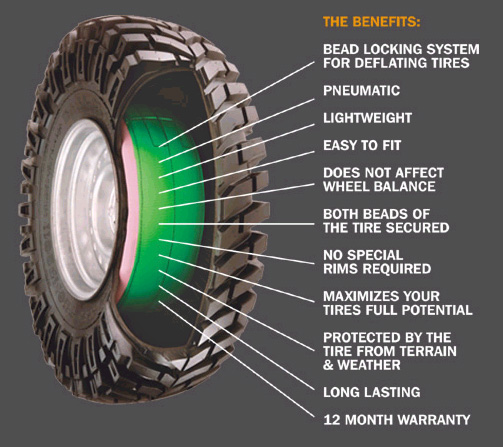 The only way to do it properly is by using a tire pressure gauge.
The only way to do it properly is by using a tire pressure gauge.
You should aim to check your tire pressures at least once a month, and definitely before any long drives. This will go a long way towards preventing any possible danger while driving and minimize your risk of a blowout. But there are a few other things to bear in mind when you are checking your tire pressures.
Higher temperatures will cause your tires to naturally increase in pressure, due to the proportional relationship between pressure and temperature. Thus, you should always check your tires before driving, as they will heat up with the friction from the road, giving you a higher reading than when they are cold. You should also check them in the morning, before it gets warmer during the day.
Manufacturers will provide their recommended tire pressures for your car assuming you are checking them cold, and so always try to do so in a cool environment. If you live somewhere very hot, check the manufacturer’s guidelines and try to find out what their recommendations are for different climates, as a 10°C difference can mean a difference in pressure of around 1 PSI.
If you live somewhere very hot, check the manufacturer’s guidelines and try to find out what their recommendations are for different climates, as a 10°C difference can mean a difference in pressure of around 1 PSI.
You will also see that your manufacturer’s guidelines are for various different tire types, so you want to make sure you are filling your tires up correctly for your specific tires. There will also be different guidelines depending on how many people you will usually have in your car, and where they will be seated. This is once again to do with the weight on each tire.
If you are travelling a long distance and need to bring lots of heavy bags with you in the trunk, check what the manual suggests for the rear tires, as it will probably be an increase versus the pressure for normal driving with no passengers or extra weight. Just remember to let some air out afterwards, so you don’t end up driving with over-inflated tires without the extra weight!
Final ThoughtsTire pressures are very important to maintain, and there are a few signs you can look out for if you think your tires might be over-inflated.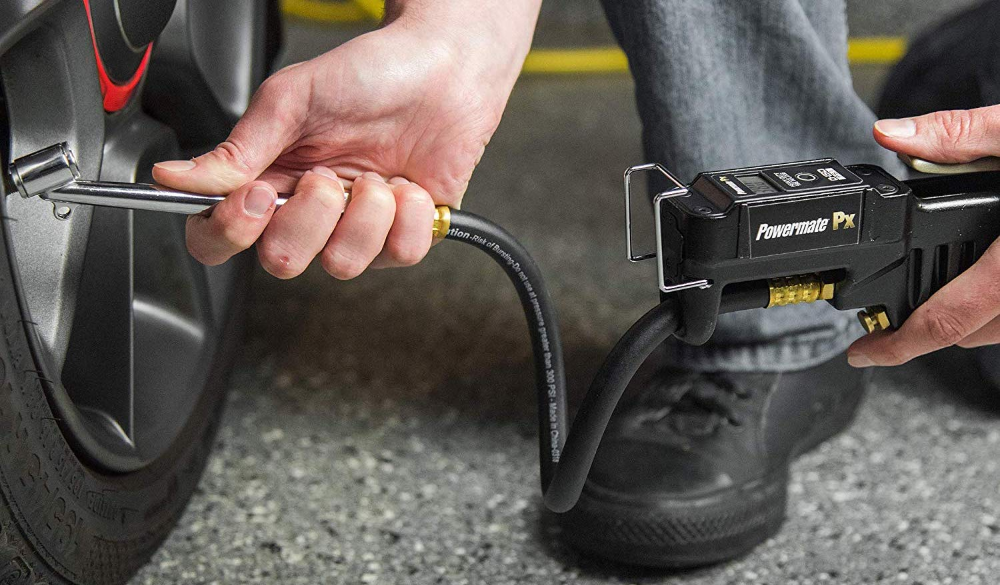 Short of simply checking your tire pressures against the manufacturer’s guidelines, you will notice uneven tread wear, decreased traction and possibly an uncomfortable ride too.
Short of simply checking your tire pressures against the manufacturer’s guidelines, you will notice uneven tread wear, decreased traction and possibly an uncomfortable ride too.
You may also notice your car’s ESC systems acting slightly odd, but all these symptoms are also experienced with under-inflated tires as well. Thus, it is vital that you check your tire pressures regularly and monitor your tread too. Driving without the correct pressure in your tires can cost you more money in terms of fuel, but it will also make driving far more dangerous for you as well.
In the last article, I briefly described what determines the grip of the tire with the road in terms of physics. All special reference books and scientific papers known to me describe the adhesion force of tires with the expensive well-known Amonton-Coulomb formula: F = µmg, and it is perfectly confirmed by practice, despite its simplicity.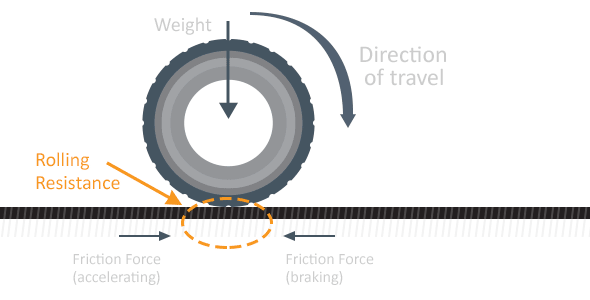 As a result, we have the only parameter included in this formula and related to the tire - the coefficient of adhesion. And behind the external simplicity of the Amonton-Coulomb formula, a rather complicated process is hidden, since the friction coefficient is not constant and clearly depends on a number of other parameters:
As a result, we have the only parameter included in this formula and related to the tire - the coefficient of adhesion. And behind the external simplicity of the Amonton-Coulomb formula, a rather complicated process is hidden, since the friction coefficient is not constant and clearly depends on a number of other parameters:
Here we will talk about them in the following article.
This is the most obvious parameter that affects tire grip and does not need much discussion. Even a child knows that ice is slippery, but asphalt is not. Here is a classic set of tire adhesion coefficients with different road surfaces:
0.1
0.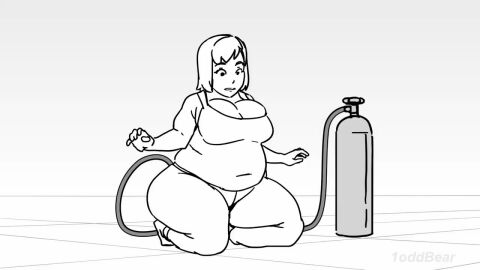 05
05
The values may differ depending on the director and, in addition, were relevant another 20-30 years ago. According to some reports, modern tires can provide grip on dry asphalt with a coefficient of 1.0-1.1. So, it is quite possible that the plate is outdated, but I still recommend that you focus on it - you will be more useful
Practical tips
1. Remember that the condition of the road surface has a very, very strong effect on tire grip. The braking distance on ice in winter can exceed the braking distance on asphalt in summer up to 10 times. Even in summer, when it rains, the braking distance can be doubled compared to the braking distance on dry pavement. So always think about the type of surface you are driving on and choose the appropriate distance from the lead car and speed before the turn.
The photo below shows winter and summer tires.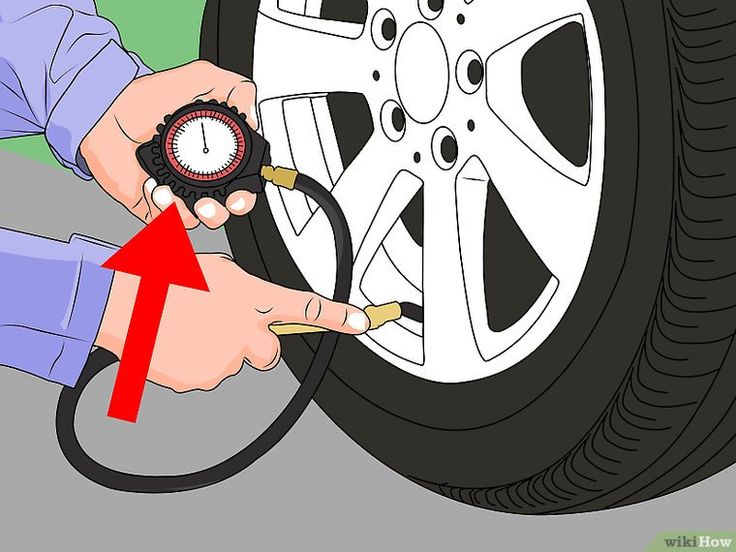 I draw your attention to the fact that it is not the tread pattern itself that is important (herringbone, striped, checkered, lined), but its type. Of course, they have a different pattern, but it is not it that fundamentally distinguishes tires from each other, but a different type of tread . The summer tire has smooth edges, has continuous longitudinal sipe grooves, no sipes, and the groove depth is noticeably shallower than that of a winter tire, although this is not visible from the figure. A winter tire, on the other hand, has rough, sharp edges that help break up the snow-ice crust and “teeth” catch on the snow mass. Mud tires have similar and more pronounced "teeth", allowing better grip on loose surfaces. The tread of a winter tire itself is dotted with many slots - lamellae, the grooves are deeper than those of a summer tire. And the most important difference between winter and summer tires is that summer tires are hard - for asphalt, and winter tires are soft - for snow and frost.
I draw your attention to the fact that it is not the tread pattern itself that is important (herringbone, striped, checkered, lined), but its type. Of course, they have a different pattern, but it is not it that fundamentally distinguishes tires from each other, but a different type of tread . The summer tire has smooth edges, has continuous longitudinal sipe grooves, no sipes, and the groove depth is noticeably shallower than that of a winter tire, although this is not visible from the figure. A winter tire, on the other hand, has rough, sharp edges that help break up the snow-ice crust and “teeth” catch on the snow mass. Mud tires have similar and more pronounced "teeth", allowing better grip on loose surfaces. The tread of a winter tire itself is dotted with many slots - lamellae, the grooves are deeper than those of a summer tire. And the most important difference between winter and summer tires is that summer tires are hard - for asphalt, and winter tires are soft - for snow and frost.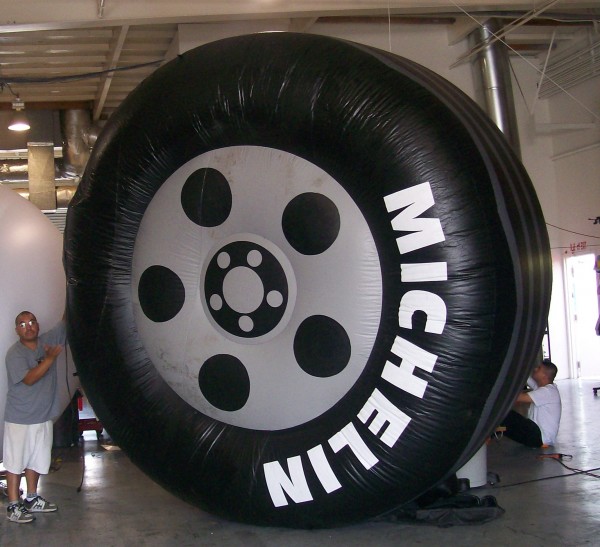
Logic is as follows:
Soft composition => Good adhesion in the cold and bad in the heat
Hard composition => Good adhesion with warm asphalt and bad in the cold 9000Practical practical recommendations
2. Always consider the quality of the tires you have on your car. Remember that winter tires will never hold paved roads as well as summer tires due to the nature of the rubber compound. Moreover, winter tires hold summer asphalt even worse than winter tires. And economy class summer tires will always be inferior in terms of grip to expensive premium tires. Keep this in mind and choose your driving style according to the capabilities of your car and your tires.
3. Don't skimp on tires, tires are the only link between your car and the road and your safety. Use summer tires in summer, don't use winter tires.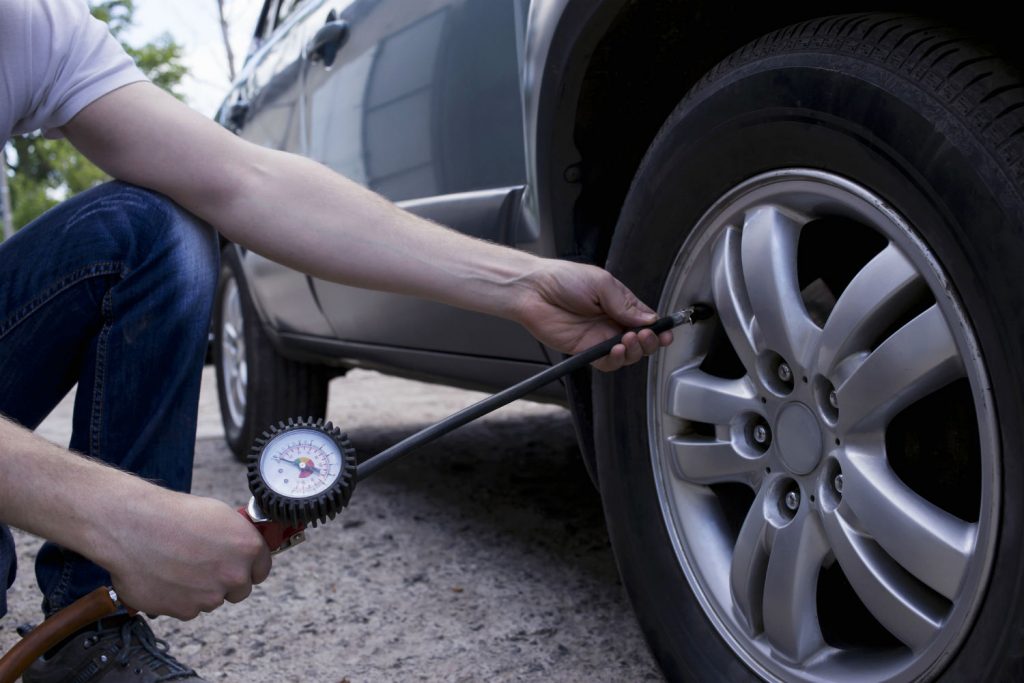 Avoid all-season tires, they do not give good grip in summer or winter. Do not save money and buy cheap economy tires. It is better to overpay for a good set of tires and thereby save on body repairs, and even on treatment ...
Avoid all-season tires, they do not give good grip in summer or winter. Do not save money and buy cheap economy tires. It is better to overpay for a good set of tires and thereby save on body repairs, and even on treatment ...
As for the pattern itself, it is more necessary for the aesthetic perception of the tire, and even the tire manufacturers themselves say that the pattern is a marketing tool. You can't tell the composition of their rubber by looking at a tire display in a store, can you? You can not. And to distinguish one drawing from another is very even. That's where they stand...
If you've ever paid attention to racing tires, in particular Formula 1 cars, you've probably noticed that racing tires have no pattern at all. There is a protector, but there is no pattern. And this is a racing type of tread for dry asphalt.
But rain tires already have a pattern, there is a rain-type tread, and the pattern is made in such a way as to most effectively remove water from the contact patch so that water does not interfere with the contact of the tire with asphalt.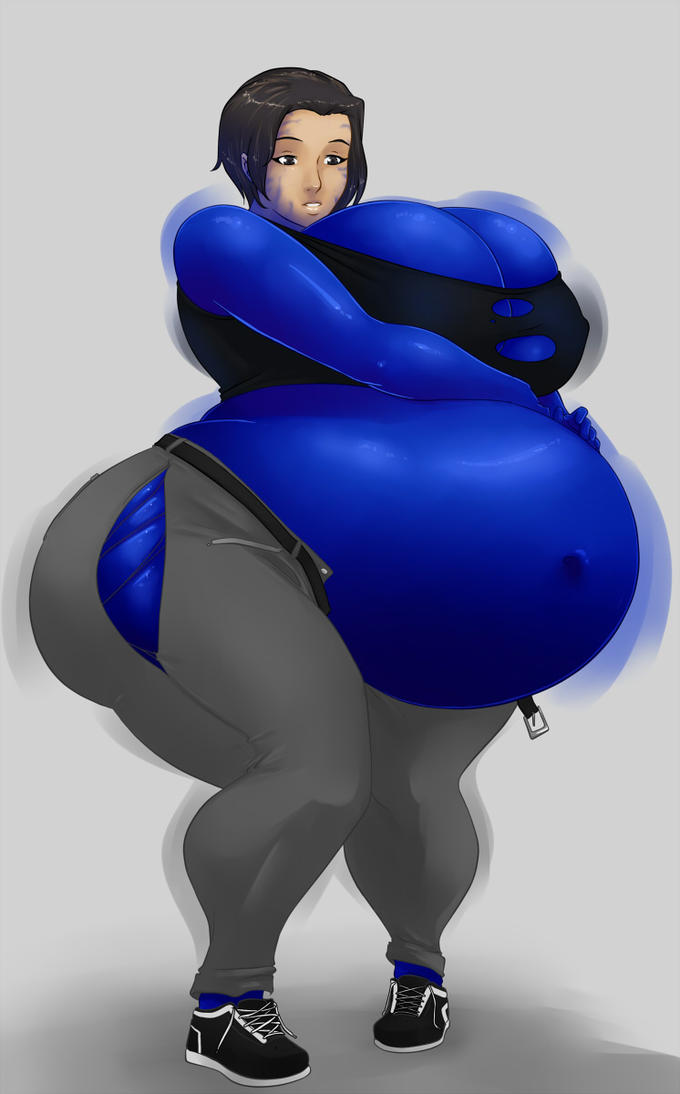 At the same time, the composition of the rubber is special, especially for wet asphalt, and it is he who sets the grip. Thus, grooves in the rain tread cannot affect the grip as such, they only prevent the tire from losing contact with the road, and grip in the presence of contact provides rubber compound .
At the same time, the composition of the rubber is special, especially for wet asphalt, and it is he who sets the grip. Thus, grooves in the rain tread cannot affect the grip as such, they only prevent the tire from losing contact with the road, and grip in the presence of contact provides rubber compound .
This logic is as follows:
rain tread type => effective water removal from the contact patch => better tire contact with the road => less loss of initial grip properties => providing grip due to rubber composition
wrong logic:
rain tread type => improved wet grip due to herringbone pattern
Practical advice
. Perhaps your trendy pattern is "painted" on the high-quality tread of expensive tires, then you have really good traction due to the good rubber compound. But even this does not give you a reason to be reckless, because even the best tires cannot bypass the laws of physics.
5. When choosing tires, you should not chase after a beautiful tread pattern either. You can't tell the quality of a tire from the picture, everything is determined by the composition of the rubber compound, which is not visible to the eye. Choose premium tires from leading manufacturers, rely on independent tire tests and research.
The degree of tread wear has another effect on tire grip. There is such a popular misconception: bald, that is, heavily worn tires do not hold the road well, especially wet, because there is no pattern. Of course, in the case of rain, this is partly true. Smooth tires - the same racing slicks literally float on a water film (hydroplaning phenomenon), and rain grooves in the tread, as I wrote above, help to drain water and avoid this.
But this is not the only reason why bald tires hold the road worse, and in the case of dry asphalt, not at all. It's just that the composition of the tread rubber, which is responsible for traction, is located in the surface layer of the tire, deeper than which is another rubber that plays a different role.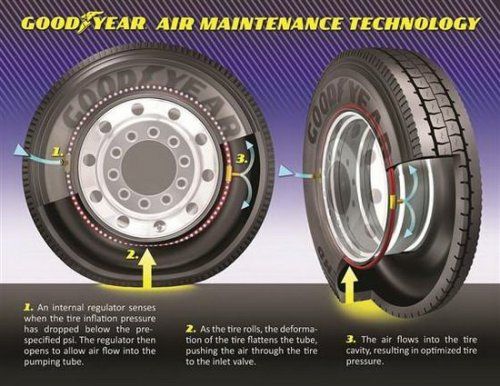 And when the tire wears out, this tenacious rubber simply does not remain, and the rubber under the tread cannot provide proper grip, since it is not designed for this. Thus, tread wear essentially does not mean abrasion of the pattern, but the disappearance of the rubber compound that provides good grip .
And when the tire wears out, this tenacious rubber simply does not remain, and the rubber under the tread cannot provide proper grip, since it is not designed for this. Thus, tread wear essentially does not mean abrasion of the pattern, but the disappearance of the rubber compound that provides good grip .
There is also an opinion that a half-worn tire has better traction than a new one, but this is more true in corners, and more on that in one of the following sections.
So it is the composition of the tread rubber that has the greatest influence on the grip of the tire with the road. And a wide, low-profile sports tire offers better traction than an eco tire with narrow and high tread, not because it is wide or with a large diameter, and not because it has a new asymmetric tread pattern, but because it has a sports tread with an appropriate rubber compound. .
As a result, incorrect logic:
Bald tire => Lack of tread pattern => Deterioration of adhesion
Correct logic:
Lysia tire => Lack of a rubber layer with a composition that provides good adhesion => Wotering clutches
Practical recommendations
6. Do not be afraid to drive on tires with partial tread wear, because of this they only hold the road better. But driving on completely worn out "bald" tires becomes dangerous, especially on wet roads. Watch for wear and change tires to new ones in time.
Do not be afraid to drive on tires with partial tread wear, because of this they only hold the road better. But driving on completely worn out "bald" tires becomes dangerous, especially on wet roads. Watch for wear and change tires to new ones in time.
Deformation of any body leads to its heating. The tire deforms during driving, especially during acceleration, braking and cornering, and, as a result, heats up . With rectilinear and uniform movement, it is also deformed, but to a greater extent due to vertical vibrations due to road irregularities. Therefore, the temperature of the tire, say, an hour after the start of the trip, differs significantly from its temperature before the trip, and even more significantly if the car was “annealed” - they braked a lot and intensively, accelerated and “tumbled” into turns with a breeze.
The grip coefficient of the tire depends on the temperature of the tire, and its maximum corresponds to a certain optimum temperature .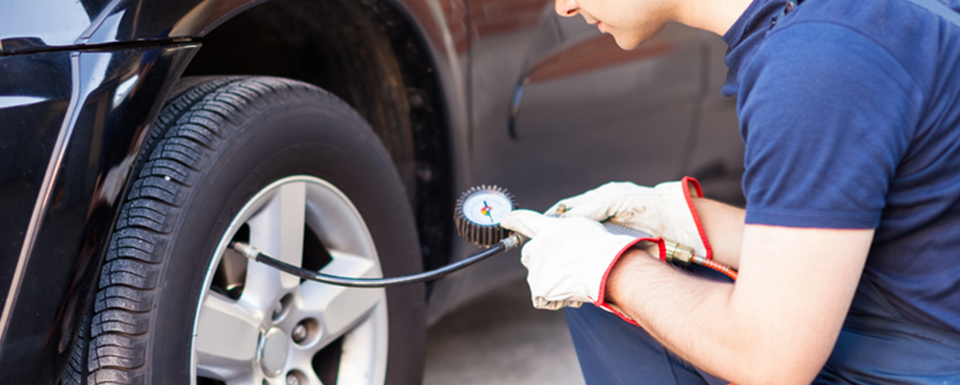 That is, on a cold tire, the coefficient has some value, when heated, it increases, and when the tire overheats, it decreases again. The optimal temperature for different tires is different, for summer road tires it is in the range of 60-90 degrees, for racing tires it is higher and can exceed 100 degrees.
That is, on a cold tire, the coefficient has some value, when heated, it increases, and when the tire overheats, it decreases again. The optimal temperature for different tires is different, for summer road tires it is in the range of 60-90 degrees, for racing tires it is higher and can exceed 100 degrees.
In normal road driving it is important not to overheat the tire, but in car racing it is important to avoid not only overheating but also underheating. Undercooling in a race means not enough friction coefficient, and therefore not enough piloting speed. Overheating is dangerous not only for a temporary deterioration in traction, but also for increased tire tread wear, which means a premature decrease in grip, but for a worn tire forever.
Practical recommendations
7. If you are a fan of dynamic driving, went on a trip, and there is no scorching heat on the street, you should not immediately dynamically accelerate and brake and “lay” into turns. Give the tires some time to warm up to operating temperature and achieve maximum traction.
Give the tires some time to warm up to operating temperature and achieve maximum traction.
8. If you go to the race track, remember that regular road tires can overheat from racing and drastically deteriorate their performance, either temporarily, while overheated, or already permanently, if you do not track their overheating in time and they wear out quickly.
So just the tire width affects the temperature stability and resistance to overheating and wear. The wider the tire, the higher its heat capacity and the better the airflow, thus it removes heat better, heats up less and wears out less. Therefore, a wide tire has less risk of losing traction during active road or racing and retains its original traction properties longer. Although with the same composition, a wide tire initially has the same grip coefficient as a narrow tire, but it retains it longer . So for lovers of active “annealing”, a wide tire should be preferable to a narrow one.
So for lovers of active “annealing”, a wide tire should be preferable to a narrow one.
However, for racing drivers it is important to find a middle ground. After all, by increasing the width of the rubber beyond measure, as a result, you may not reach the optimum temperature. An overly wide tire will cool too much, and there is a risk that, no matter how hard we try, we will not heat the tire above 60 degrees, which means we will get a lower coefficient of adhesion than if we put a narrower tire and warm it up to the desired temperature.
So when the width of the tire profile increases, the following logic takes place:
wide tire => less overheating and wear => long retention of the initial grip properties at increased loads > more contact patch area => more grip force
Thus, tire width does not directly affect tire grip, but indirectly. I repeat, with the same rubber composition, a wide tire initially has the same grip coefficient as a narrow tire, but retains it longer due to less risk of overheating and less wear.
Practical advice
manufacturers. For the track, it is best to use specialized tires - semi-slicks or slicks.
10. Also remember that tires that are too wide on your particular vehicle may not warm up to operating temperature due to intense cooling, and then you will not be able to achieve maximum traction and fully exploit the potential of your car. In everything, a measure is needed - including the installation of tires of optimal width.
Another factor that affects tire heating is the air pressure to which it is inflated. As I already wrote, the tire heats up from deformation. The greater the deformation, the greater the heating. And the more air pressure in the tire, the harder it is and the less deformation and the less heating. The reverse is also true: low pressure leads to rapid heating and possibly overheating.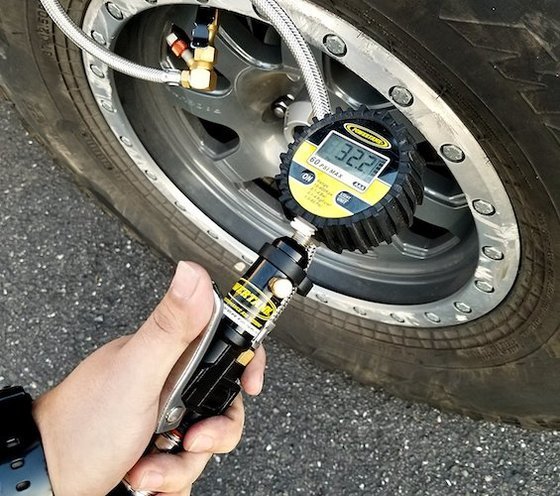 Therefore, in the instructions for any car, along with the recommended tire pressure, you can see a recommendation to pump tires when driving with a large load or at high speed.
Therefore, in the instructions for any car, along with the recommended tire pressure, you can see a recommendation to pump tires when driving with a large load or at high speed.
So flat tires will impair driving performance due to more tire deformation. But this deformation is bad both in itself (it increases the slip, more on that below), and due to the increased heating of the tire.
Result:
reduced tire pressure => more softness of the tire => more tire deformation => increased heat => increased risk of temporary loss of grip and premature wear
Do not confuse tire tread temperature with tire air temperature. From the Law of Mendeleev-Clapeyron
PV = RT (7)
where P is the air pressure, V is the volume of air, R is a universal gas constant, T is the air temperature,
It immediately follows, which is with an increase in air temperature and the air increases and increases and its pressure, and vice versa, when it gets cold, the pressure decreases . This means that if today at 0 degrees outside you inflated the tires to the optimum pressure, and tomorrow it gets cold to -15, you need to go pump up the tires . Although the air has not gone anywhere, its pressure has decreased markedly due to the decrease in temperature. Similarly, with a sharp warming, it makes sense to bleed air and get rid of excess pressure.
This means that if today at 0 degrees outside you inflated the tires to the optimum pressure, and tomorrow it gets cold to -15, you need to go pump up the tires . Although the air has not gone anywhere, its pressure has decreased markedly due to the decrease in temperature. Similarly, with a sharp warming, it makes sense to bleed air and get rid of excess pressure.
i.e.:
cold outside => lower tire temperature => lower tire pressure => need to inflate tires
But this fact does not contradict the fact that before driving at high speed, including on the race track, you should inflate the tires to prevent them from overheating. After all, tires overheat from increased deformation due to lack of air pressure. And an excess of pressure leads to heating of the air in the tire itself.
Practical advice
11. Regularly (every 1-2 weeks) do a routine tire pressure check using a pressure gauge. In the event of a sharp change in temperature outside, do an unscheduled tire pressure check. If the check showed a discrepancy between the pressure recommended by the VEHICLE manufacturer, ensure the required pressure - pump up flat tires or deflate over-inflated tires.
In the event of a sharp change in temperature outside, do an unscheduled tire pressure check. If the check showed a discrepancy between the pressure recommended by the VEHICLE manufacturer, ensure the required pressure - pump up flat tires or deflate over-inflated tires.
12. Before driving at high speeds and/or with heavy loads or on the race track, increase the tire pressure by approximately 20%. Do not forget to release excess air at the end of the trip.
13. Remember that the air pressure in the tires should be checked when the tires are cold - at least 2 hours after the end of the trip. If the car has traveled more than 1 km, the air in the tires heats up, and the pressure gauge will show too high pressure.
In this article, I have considered the effect of the following parameters on the tire grip coefficient:
And here are the conclusions:
1. With road surface all simple: tires hold well on asphalt and poorly on ice. The braking distance on these surfaces can differ even by 10 times.
With road surface all simple: tires hold well on asphalt and poorly on ice. The braking distance on these surfaces can differ even by 10 times.
2. As for the tire itself, the tread compound makes the biggest contribution to grip. The tread pattern does not affect grip on dry pavement, but indirectly affects wet pavement - it squeezes water out of the contact patch and prevents the tire from floating on a water wedge, but the grip itself provides the rubber composition. The appearance of the tread pattern is an aesthetic moment; you cannot determine the quality of the grip of the tire with the road by eye. Therefore, a bald worn tire is not bad for the lack of a pattern, but for the lack of tread rubber.
3. The coefficient of adhesion depends on the temperature of the tire and reaches its maximum when it is heated to an operating temperature of 60-90 degrees. The wide profile of the tire insures it against overheating and provides less wear and temperature stability due to better air cooling.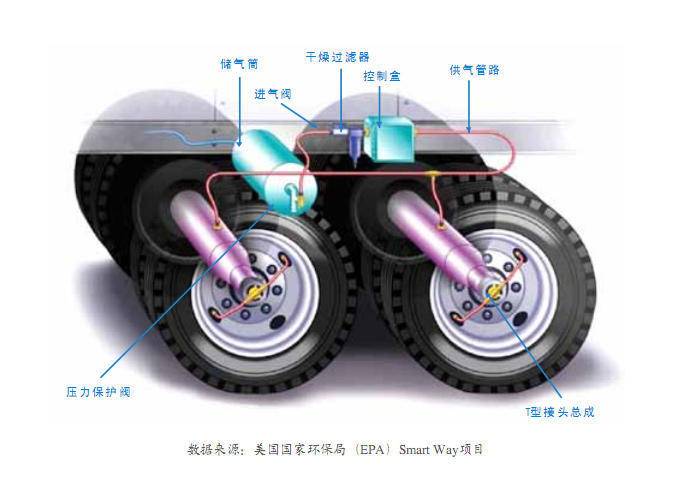 Therefore, sports tires for asphalt driving are made wide.
Therefore, sports tires for asphalt driving are made wide.
In the next article - about the effect of vehicle speed and tire slip on the coefficient of adhesion.
To be continued…
Dear friends! This is an old version of an article that was written in August 2011. Now there is a new series of articles on tire grip in 4 parts, where I have presented the topic in a more complete and systematic way. I invite you to familiarize yourself with it, here is the first part of the article: What determines the grip of tires with the road? Part 1
In the last issue I wrote about tire sizes, terminology and some misconceptions about tires. Let's now discuss what is what in tire sizes, and move on to the next batch of misconceptions.
The tire deforms under the force of the car's gravity, forming a so-called contact patch. An example from life: if a child sitting on a bus leans his nose against the window, then dad and mom from the street will see a funny “nickle” on the tip of their nose :).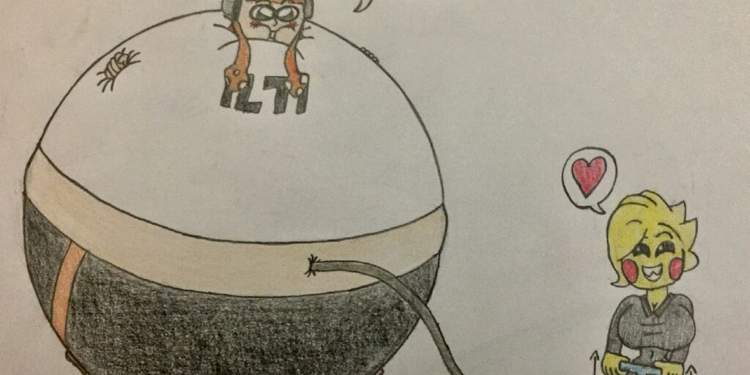 This is the contact patch. A similar picture is with a tire that is pressed against the road.
This is the contact patch. A similar picture is with a tire that is pressed against the road.
It is commonly believed among car enthusiasts that the wider the tire, the larger the contact patch of the tire with the road and the better the grip. And, supposedly, the shorter the braking distance, the better the maneuverability and controllability of the car. And sometimes they think that if the car does not brake directly, but sideways, then the braking distance will be shorter, because the contact patch is wider. This is not true.
I will immediately give evidence from physics.
Brakeovoving distance:
S = V2/2µG (1)
Here S is the braking distance, V - the speed of the machine, µ is the shin of the tire on the road, G - acceleration of free drop.
As you can see, braking distance does not depend on the width of the tire profile and the area of the tire contact patch with the road . In this formula, there is only one "representative" of the tire - this is the coefficient of friction, which depends on the nature of the contacting bodies. In this case, it depends on the type of road surface and on the chemical composition of the rubber compound of the tire tread. Accordingly, and tire grip depends on the composition of the tread compound. Let's talk.
In this case, it depends on the type of road surface and on the chemical composition of the rubber compound of the tire tread. Accordingly, and tire grip depends on the composition of the tread compound. Let's talk.
Very simple. On the one hand, , the larger its area, the more “tentacles” the tire clings to the road . This fact lies on the surface, and people willingly think that grip is proportional to tire width. But there is another side of the coin, which many people forget: the size of the contact patch directly affects the weight of the tire per unit area, that is, the pressure that it exerts with its weight on the road. The larger the contact area, the lower the tire pressure on the road . Please don't confuse the tire pressure on the road with the air pressure in the tire :)
What is a dull knife and a sharp knife? A blunt one has a thicker blade, and a sharp one has a thinner one. The difference is only in the pressure that the knife exerts, for example, on bread. Thinner (i.e. less contact area between the knife and bread) - more pressure, cuts better, thicker - worse.
The difference is only in the pressure that the knife exerts, for example, on bread. Thinner (i.e. less contact area between the knife and bread) - more pressure, cuts better, thicker - worse.
Suppose a fisherman needs to cross a frozen pond with thin ice. What skis should you wear? Running - with a width of about 5 cm, or hunting - with a width of about 30 cm? Of course, hunting. Because they are wider, they will have less pressure on the ice and are less likely to fall through.
For this reason, by the way, winter tires are always narrower than summer tires - to increase the pressure on the road and better “bite” into the snow and ice crust.
As a result, if we increase the area of the contact patch (ie, instead of the 205th tire we put 255), then we reduce the pressure on the road. It turns out, how many times we increase the grip area, exactly the same number of times we reduce the pressure on the road . Bash on bash - and the clutch does not change.
By the way does not affect grip and tread pattern. If you pay attention to racing slicks, in the same Formula 1, then they are generally "bald" and do not have any pattern. The pattern on summer tires is needed only to drain water from the contact patch. Grip is not affected by the pattern, but by the type of tread: mud, winter, rain, summer. Summer tires will get you bogged down in mud and snow, while mud tires won't drive you fast on winding roads. But this is a fundamentally different type of tread, with a different purpose.
Take three different Nokian Hakkappeliitta tires: 4.5 and 7. The pattern is different for everyone, but the essence is the same, all models are good. You can also take top winter tires from different manufacturers Nokian, Michelin, Gislaved, Goodyear. All tread patterns are different, but the characteristics are similar. Because everyone has the same purpose and a winter type of tread that has lugs and sipes, and most importantly, the composition of the rubber.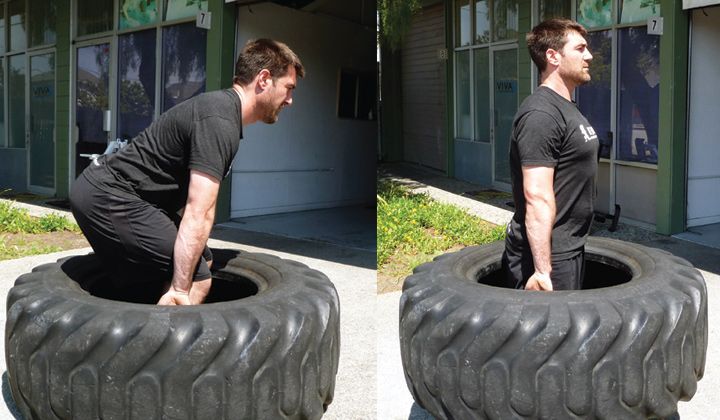 But the Russians, I don’t remember the exact manufacturer, have a tire - according to the tread pattern, an exact copy of the Goodyear Ultragrip 500. And the difference between them is like between heaven and earth, as you understand. As a drawing, do not copy, but without a high-quality rubber composition, nowhere. and tire grip does not depend on what pattern on the tire is herringbone, stripe or checkered, but on the composition of the rubber compound .
But the Russians, I don’t remember the exact manufacturer, have a tire - according to the tread pattern, an exact copy of the Goodyear Ultragrip 500. And the difference between them is like between heaven and earth, as you understand. As a drawing, do not copy, but without a high-quality rubber composition, nowhere. and tire grip does not depend on what pattern on the tire is herringbone, stripe or checkered, but on the composition of the rubber compound .
That is, the type of tread makes winter or summer tires, and the pattern is the only thing that the buyer can “feel” when buying and that can affect the emotional perception of the tire. Of course, there are fans of the smell of rubber, which is in tire shops, but that's another story :)
If you resort to the help of the formulas, then the clutch friction force (it is also the strength of resting rest) in the absence of adhesion (the effect of gluing in contact surfaces) is determined by the law of the pendant:
F = µn = µmg (2)
where µ is the coefficient where µ is the coefficient. clutch, N is the weight of the body (tires, in this case), m is the mass of the body (tires), g is the acceleration of free fall.
clutch, N is the weight of the body (tires, in this case), m is the mass of the body (tires), g is the acceleration of free fall.
As you can imagine, road tires don't stick to the pavement, so this is just our case. As you can see, the area of the contact patch does not contribute to the force of static friction, as well as to the length of the braking distance .
To make it clearer where the area has gone, you can rewrite Coulomb's law in a different way, taking into account the area of the contact spot and reflect the effect of the spot on pressure. It's simple: the pressure of a body on a support or, in our case, a tire on asphalt is equal to the weight of the body (tire) divided by the contact area:
P = N/S = mg/S0005
where P is the tire pressure on the road, N = mg is the same tire weight.
Then from here you can express weight through pressure:
N = PS (4)
Now, if we substitute this formula into the Law of the pendant, we get:
F = µPs (5)
or, expressed by human language, the grip force of the tire with the road is proportional to the coefficient of adhesion, the pressure of the tire on the road and the area of the contact patch.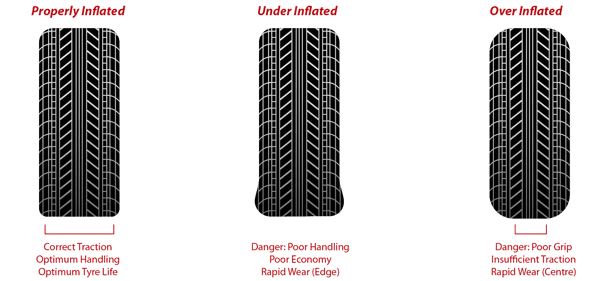 This is exactly how grip strength is perceived by most people. But here the dog is buried - in that the pressure directly depends on the area of the contact patch and is inversely proportional to it. Formula (3) tells us about this. Putting here the expression for pressure, we get:
This is exactly how grip strength is perceived by most people. But here the dog is buried - in that the pressure directly depends on the area of the contact patch and is inversely proportional to it. Formula (3) tells us about this. Putting here the expression for pressure, we get:
F = µmgs/S (6)
Then we successfully reduce the area and we come to the Law of the Kulon (2) and the clutch power that does not depend on the area of the contact spot .
By the way, let me tell you about one more common misconception. Friction is different: friction of rest, rolling, sliding. And often people think that the tire rolls due to rolling friction. I will not delve into these issues, I will write briefly. Tire rolling due to static friction . That is, during rolling, the contact patch of the tire with the road is at rest relative to the road .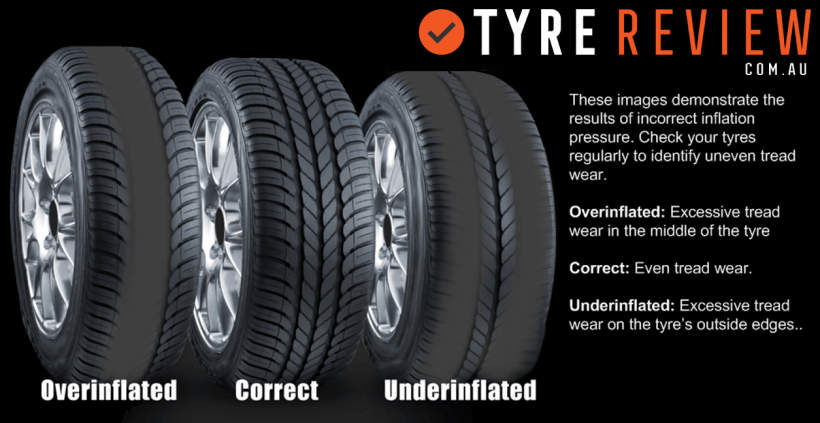
Surprised? And you pay attention to the legs, shoes of a walking person. As soon as a person takes a step, his foot stops, and he transfers weight from it to the second leg and takes another step. It turns out that the upper body of a person moves while one leg rests. The tire behaves similarly, only it makes many, many small steps, rolling from one tire element to another, and each of them rests relative to the road at the moment of rolling. Accordingly, during rolling, a static friction force acts between the tire and the road.
If the contact patch begins to move relative to the road, then this means the tire is slipping, and here the static friction turns into sliding friction.
Rolling friction is a completely different type of friction that occurs due to tire deformation and is always directed to the side against the direction of rolling. The greater the deformation of the tire, the greater the rolling friction. Since a flat tire deforms more than an inflated one, a simple conclusion suggests itself: Monitor and maintain tire pressure as instructed in vehicle owner's manual .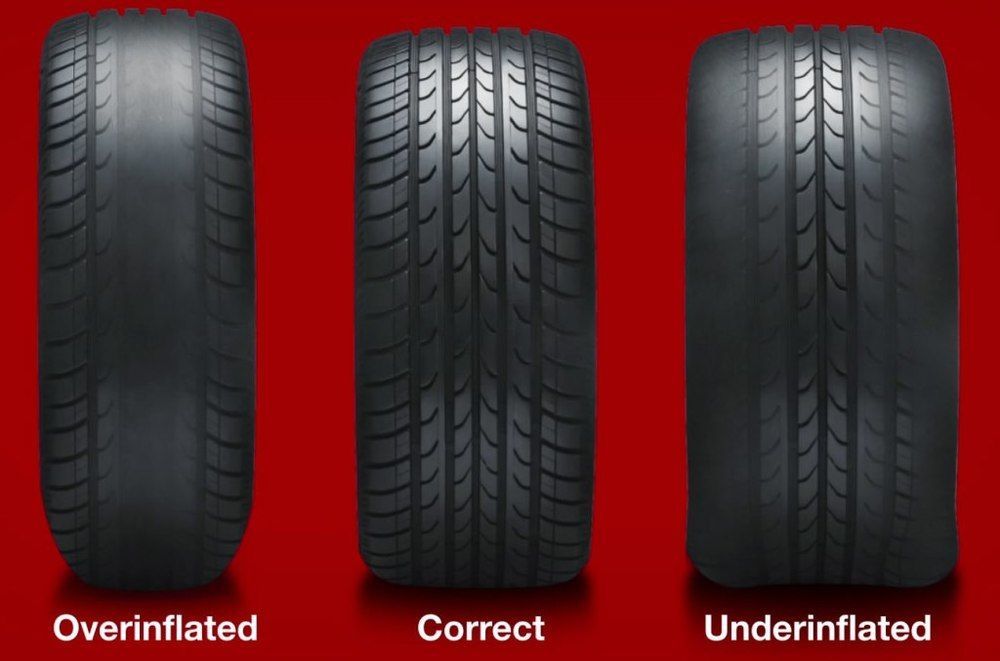 That is, rolling friction is a parasitic type of friction, on which, by the way, fuel consumption depends. If designers try to increase the static friction force of the tire with the road, then they always try to reduce the rolling friction force.
That is, rolling friction is a parasitic type of friction, on which, by the way, fuel consumption depends. If designers try to increase the static friction force of the tire with the road, then they always try to reduce the rolling friction force.
It turns out that the grip of the tire with the road is the static friction force, and it does not depend on the width of the tire and the area of the contact patch .
And it is very easy to apply what has been written above in life. Tire grip is the basis of safe driving , the higher it is, the safer you can drive. This is no secret to anyone. Some drivers are cool about what tires are on their cars, and I think it doesn't matter. Important! Almost the most important thing in the car. But among those drivers who value safety, traction and tires, there are those who think that they will improve traction if they put wider tires on their car. Or they often think that you can increase grip by installing tires with a more "fancy" tread pattern. As you already understood, these things are not related.
As you already understood, these things are not related.
Of course, wide tires are important, because is made and installed on cars for some reason. And what wide tires are for, we will discuss in the next article or in the MBA driver course: Driving Mastery, but the braking properties of the car will not improve from them.
By the way, think about this fact: if everything was so simple and wide tires would brake better than narrow ones, then the tire manufacturer could easily solve the problem of winter - they would make winter tires wide , and that's it! However, this does not happen and, moreover, the opposite happens: winter tires, as a rule, are already summer ...
So, , in order to improve tire grip, you need to install tires made from rubber of higher quality . The problem is that when buying a tire, we cannot evaluate the quality of the rubber compound and almost 100% evaluate the tire visually - by the design of the tread, as well as by the width and height of the profile.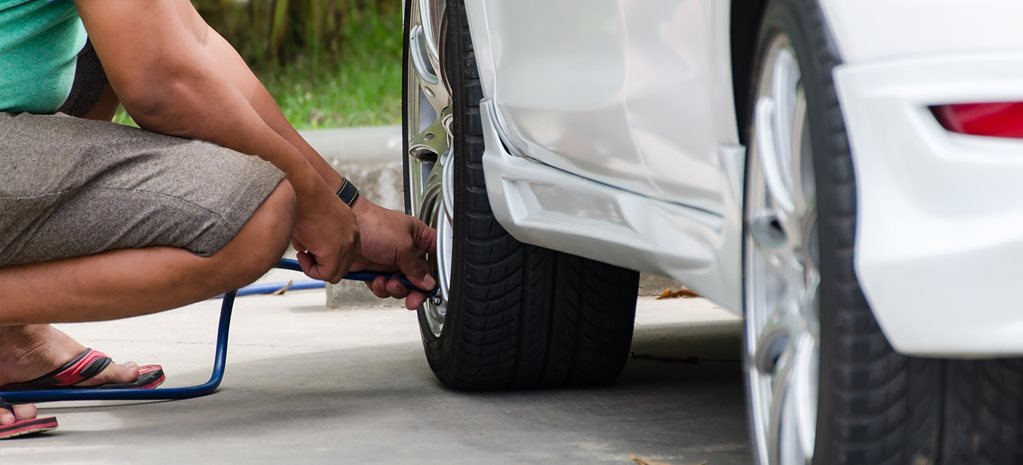 Many people buy into this…
Many people buy into this…
How to choose the right tires? Unfortunately, there is no clear answer to this question. There are general considerations, there are three of them.
You may also notice that good expensive tires are often wider than average economy tires and also have a lower profile.